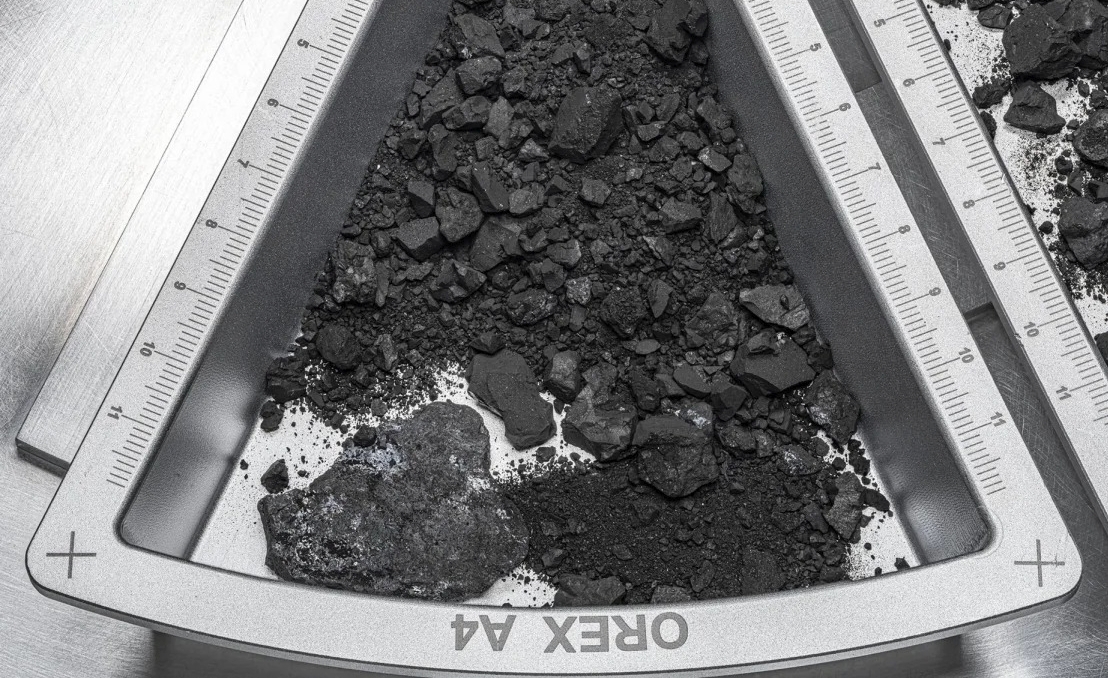
Initial analyses of samples from the asteroid Bennu that arrived at NASA last year suggest the space rock, which contains the building blocks of life, may have been torn from a primitive water world.
On a seven-year mission, NASA’s OSIRIS-REx spacecraft landed on Bennu’s surface in 2020 and collected samples that were parachuted into a desert area in Utah last year.
“The samples are the largest repository of unaltered material from asteroids,” he said. NASA Advertisement Dante Lauretta of the University of Arizona, a member of the research team behind the latest discovery.
Initial analyses published by his team in the review. Meteorology and Planetary Sciences It confirms that Bennu contains large amounts of carbon and nitrogen. It also reveals the presence of magnesium and sodium phosphate, crystalline materials that normally form in the presence of water.
The researchers noted that phosphate was also found in samples from the asteroid Ryugu collected by Japan’s Hayabusa2 mission, however, Bennu’s phosphate is purer and contains larger crystals.
“The presence and condition of phosphate, along with other elements and compounds from Bennu, suggests that the asteroid had a watery past,” Lauretta said.
“Bennu is likely part of a water world, although this hypothesis needs further investigation.”
Light-colored phosphate crystals can be seen on this one-millimeter-wide material (Lauretta & Connolly et al. / Meteoritics & Planetary Science)
The hypothetical body from which the space rock may have broken off must have been a young protoplanet that later disintegrated in collisions with other bodies.
Asteroids are believed to contain valuable information about the formation of Earth and other planets, because they are made up of material left over from the formation of the solar system 4.6 billion years ago.
Bennu’s material is believed to have remained intact ever since, without melting or solidifying again.
The discovery that Bennu may have been part of a body of water seems to support the theory that asteroids brought Earth its water and the building blocks of life.
“OSIRIS-REx has given us exactly what we were hoping for: a large, unaltered sample of a nitrogen- and carbon-rich asteroid from an ancient water world,” said NASA’s Jason Durkin, a member of the research team.
NASA said the samples are dominated by clay-like materials like serpentine, which are found on Earth at what are called mid-ocean ridges. At these rifts, material from the Earth’s mantle comes into contact with seawater.
According to Lauretta, Bennu’s material “holds the key to understanding the complex processes of solar system formation and the chemistry of microscopic organisms that may have contributed to the emergence of life on Earth.”

“Total alcohol fanatic. Coffee junkie. Amateur twitter evangelist. Wannabe zombie enthusiast.”





More Stories
Is this what the PS5 Pro will look like? (Image)
Finally, Windows 11 24H2 update significantly boosts AMD Ryzen – Windows 11 performance
Heart Surgeon Reveals The 4 Things He ‘Totally Avoids’ In His Life